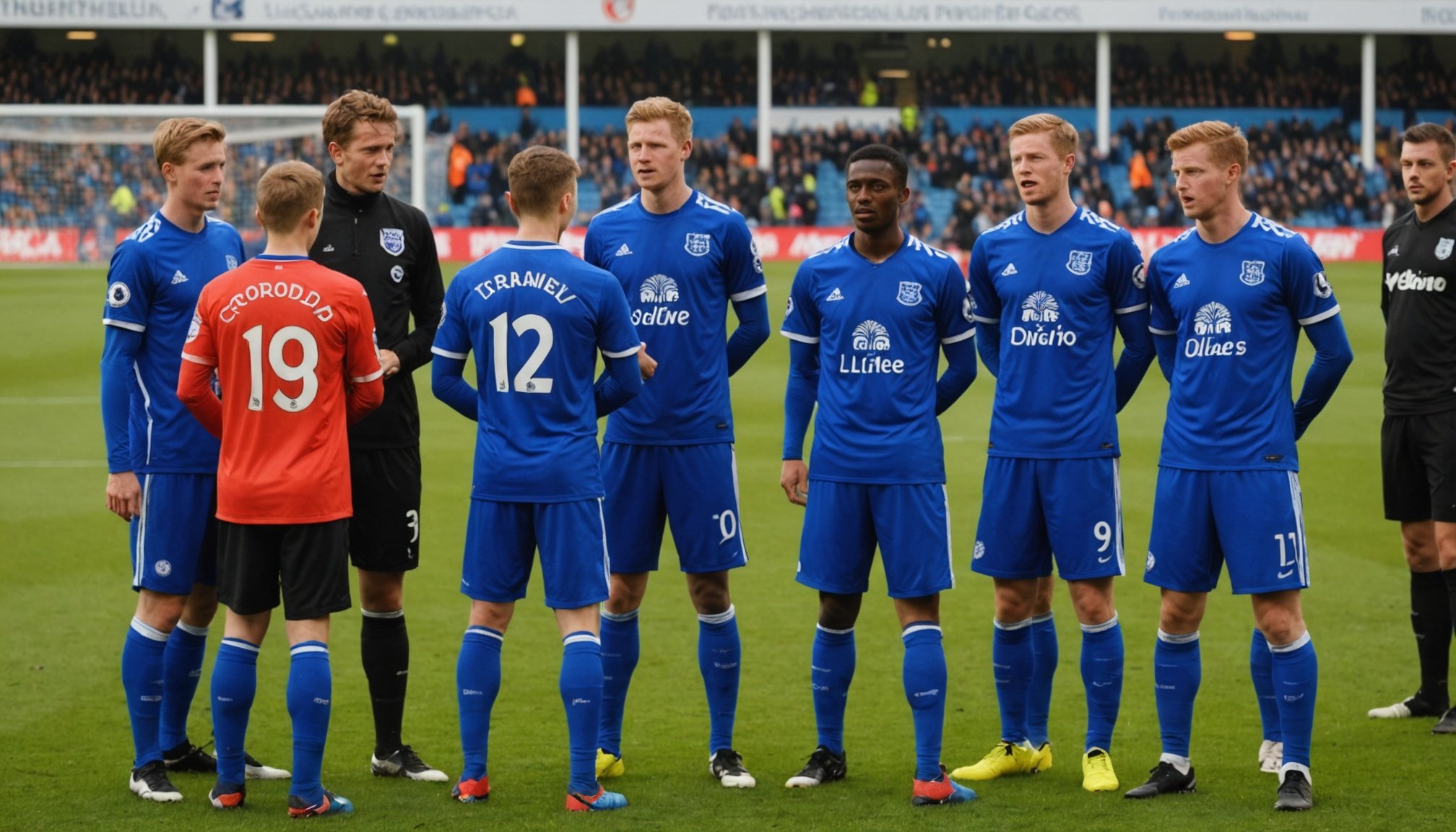The vibrant world of UK football is a tapestry woven with tradition, competition, and development. At the heart of this landscape is a multi-tiered league structure that not only fuels the excitement of the sport but also plays a crucial role in nurturing talent. As football aficionados or emerging players, understanding how this system influences player development is beneficial. Let’s explore the intricate dynamics of the UK’s football leagues and their impact on shaping tomorrow’s stars.
Understanding the League Structure
When delving into the structure of UK football leagues, it’s vital to unravel the complex hierarchy that forms its foundation. At the apex is the Premier League, home to some of the most prominent clubs and players globally. As we descend, we encounter the English Football League (EFL), which consists of the Championship, League One, and League Two. These tiers serve as both an arena of competition and a cradle of development for up-and-coming talent.
Additional reading : What are the most effective fan engagement strategies employed by successful UK football clubs?
The pyramid structure facilitates smooth transitions between tiers, encouraging clubs to invest in player development to gain promotion or avoid relegation. Each level offers distinct challenges and opportunities, compelling players to adapt and refine their skills continually. The presence of this robust system means that players are consistently exposed to varying degrees of competition, fostering resilience and growth.
Moreover, the UK’s football leagues embrace a promotion and relegation system that provides a dynamic environment for both clubs and players. This mechanism ensures that teams remain competitive, further intensifying the developmental opportunities available to emerging players. By continually facing tougher opponents, players are pushed to hone their skills, ultimately enhancing their growth trajectory.
Also to discover : What role do sports psychologists play in the training of UK football teams?
Grassroots to Greatness: Pathways to Professionalism
In the UK, the journey from grassroots football to professional leagues is a meticulously crafted pathway designed to nurture talent from a young age. Youth academies play a pivotal role in this developmental journey, offering young players a structured environment to cultivate their skills.
At the grassroots level, community clubs and school programs serve as the initial entry points into organized football. Here, players are first introduced to the fundamentals of the game while learning about teamwork, discipline, and resilience—essential attributes for any aspiring footballer.
As players progress, they are often scouted by youth academies associated with professional clubs. These academies provide specialized training regimes, focusing on technical skills, tactical awareness, and psychological preparation. Under the guidance of experienced coaches, players receive individual attention, allowing for targeted development based on their unique strengths and weaknesses.
The emphasis on youth development within the UK league structure is evident through initiatives like the Elite Player Performance Plan (EPPP). This scheme aims to improve the quality and quantity of homegrown talent by providing clubs with the necessary resources to nurture young players effectively. Through rigorous coaching, competitive matches, and academic support, players are well-prepared to make the leap to professional football.
The Role of Coaching and Training
In the realm of UK football, the quality of coaching and training is paramount to player development. Coaches are not merely instructors; they are mentors who shape the careers of budding footballers. The UK’s league structure promotes a culture of continuous professional development among coaches, enabling them to impart cutting-edge techniques and strategies to their protégés.
Professional clubs invest heavily in recruiting and training top-tier coaches who are adept at identifying and nurturing talent. The emphasis is placed on creating a holistic development environment where players can thrive both on and off the pitch. Coaches work closely with players to enhance not only their technical abilities but also their mental fortitude and tactical understanding.
Training facilities are equipped with state-of-the-art technology, enabling coaches to leverage data analytics and performance metrics to tailor training programs. This scientific approach to training ensures that players are optimally prepared for the rigors of professional football.
Beyond technical instruction, coaches focus on fostering a positive mindset and instilling a winning mentality in players. By cultivating resilience and encouraging adaptability, coaches equip players with the tools needed to succeed in the competitive world of UK football.
The Influence of Competition and Exposure
The intensity of competition within the UK’s football leagues is a double-edged sword for player development. On one hand, it presents players with the opportunity to test their mettle against the best, challenging them to elevate their game. On the other, the high stakes of competition can exert pressure on players, necessitating careful management to prevent burnout.
Exposure to competitive matches is invaluable for player growth. It allows young players to develop a deep understanding of game dynamics, enabling them to make split-second decisions and execute strategies effectively. The diverse range of opponents in the league structure ensures that players encounter various playing styles, further broadening their tactical acumen.
Media exposure also plays a significant role in shaping a player’s career. The UK’s football leagues enjoy extensive coverage, providing young players with a platform to showcase their talents on a national and international stage. This visibility can lead to lucrative opportunities, such as sponsorships and endorsements, further motivating players to excel.
However, with exposure comes scrutiny. Players must learn to navigate the pressures of performing under the watchful eyes of coaches, fans, and the media. Developing resilience in the face of criticism is an essential skill that is honed through experience and guidance.
In the intricate lattice of the UK’s football leagues, every thread contributes to the development of players. The structured hierarchy, from grassroots to elite levels, offers a fertile ground for nurturing talent. The emphasis on coaching and training ensures that players receive the guidance necessary to flourish, while the competitive landscape provides ample opportunities for growth and exposure.
For those invested in the world of UK football, understanding this dynamic environment is crucial. Whether you are a coach, player, or enthusiast, recognizing the factors that influence player development within the league structure allows you to appreciate the nuances of this beloved sport. As we continue to witness the rise of future stars, it is clear that the UK’s football leagues are not just arenas of competition but crucibles of excellence.











